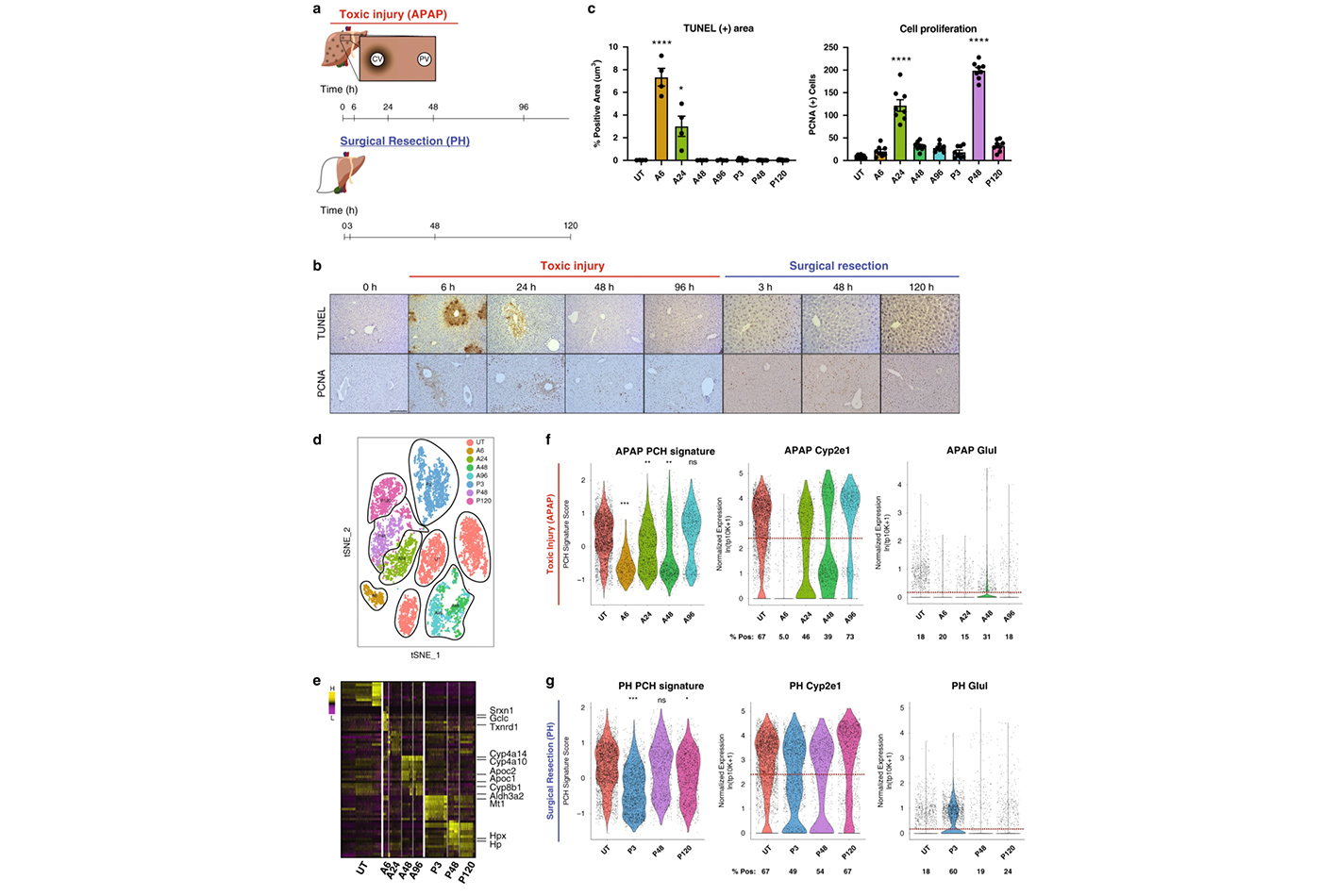Shalek paper published in Nature Communications
The paper, “Functional compensation precedes recovery of tissue mass following acute liver injury", was published on November 19, 2020.
A paper authored by Chad M. Walesky, Kellie E. Kolb, Carolyn L. Winston, Jake Henderson, Benjamin Kruft, Ira Fleming, Sungjin Ko, Satdarshan P. Monga, Florian Mueller, Udayan Apte and Alex K. Shalek was published in Nature Communications on November 19, 2020.
Functional compensation precedesrecovery of tissue mass following acuteliver injury
Chad M. Walesky, Kellie E. Kolb, Carolyn L. Winston, Jake Henderson, Benjamin Kruft, Ira Fleming, Sungjin Ko, Satdarshan P. Monga, Florian Mueller, Udayan Apte and Alex K. Shalek
Nature Communications 11, 5785 (2020)
DOI: https://doi.org/10.1038/s41467-020-19558-3
The liver plays a central role in metabolism, protein synthesis and detoxification.It possesses unique regenerative capacity upon injury. While many factorsregulating cellular proliferation during liver repair have been identified, themechanisms by which the injured liver maintains vital functions prior to tissuerecovery are unknown. Here, we identify a new phase of functional compensationfollowing acute liver injury that occurs prior to cellular proliferation. By couplingsingle-cell RNA-seq with in situ transcriptional analyses in two independentmurine liver injury models, we discover adaptive reprogramming to ensureexpression of both injury response and core liver function genes dependent onmacrophage-derived WNT/β-catenin signaling. Interestingly, transcriptionalcompensation is most prominent in non-proliferating cells, clearly delineatingtwo temporally distinct phases of liver recovery. Overall, our work describes amechanism by which the liver maintains essential physiological functions prior tocellular reconstitution and characterizes macrophage-derived WNT signalsrequired for this compensation.
The Shalek Lab creates and implements new approaches to elucidate cellular and molecular features that inform tissue-level function and dysfunction across the spectrum of human health and disease.





